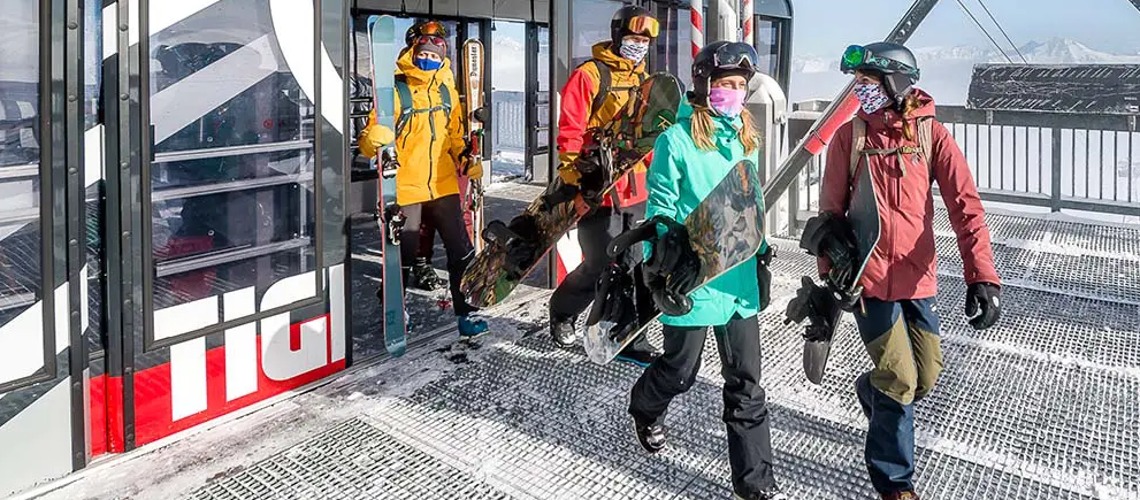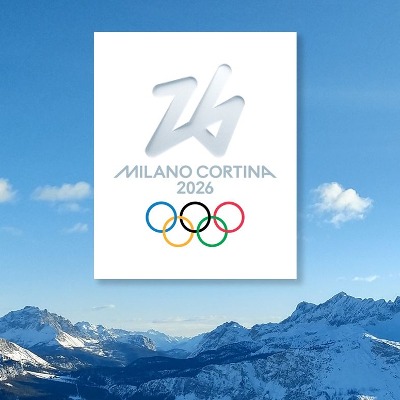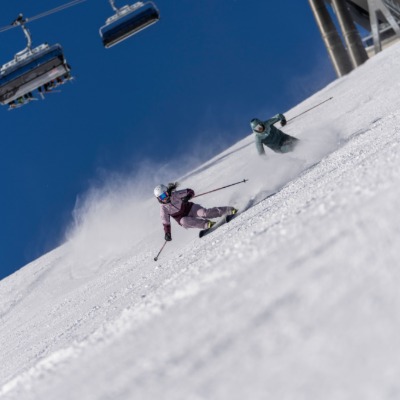Ski Vertigo Highlights Climate Change Threat To 5 Beloved Ski Resorts

Projections indicate up to the Alps could lose 70% of snow coverage by the century's end as climate change hastens its pace. Europe's cherished ski destinations are confronting a stark reality.
Warmer winters, shrinking snow seasons, and the retreat of ancient glaciers are not distant threats but imminent challenges.
Ski tour operator, Ski Vertigo, delved into the chilling grip of climate change, conducting a study to identify the most vulnerable ski resorts.
Before delving into the specifics, it's essential to grasp the typical settings of these alpine escapes.
Average European Resort Altitudes
The average altitude for European ski resorts varies, with most nestled between 1,500 and 2,500 meters. While lower-altitude resorts around 1,000 meters are quite common. It's within this varied landscape that the impact of climate change manifests differently, posing a higher risk to those at lower elevations.
Why Lower-Altitude Resorts are More at Risk:
- Warmer Temperatures: Due to their lower elevation, they experience higher average temperatures compared to higher resorts. This leads to earlier snowmelt, shorter seasons, and increased reliance on snowmaking.
- Reduced Snowfall: Overall snowfall patterns are changing, with lower areas receiving less precipitation and more rain instead of snow. This further limits natural snow cover.
- Glacier Retreat: Many lower-altitude resorts rely on meltwater from glaciers higher up for snowmaking. The rapid retreat of glaciers due to rising temperatures threatens this crucial water source.
- Snowmaking Limitations: Snowmaking is energy-intensive and requires specific temperature conditions. Increasingly warm winters make it less effective and environmentally problematic.
Vulnerable European Resorts:
1. Chamonix, France:
Home to Mont Blanc and legendary extreme runs, Chamonix (1,040m) embodies Alpine skiing. Yet, its low altitude and glacier dependence paint a grim picture. Studies predict a 70% snow cover loss by 2100, threatening the future of the Mer de Glace and iconic runs like the Vallée Blanche. This could spell doom for winter tourism and the community's economic lifeline.
2. Cervinia, Italy:
Nestled beneath the Matterhorn's watchful eye at 2,000m, Cervinia offers luxury and breathtaking views. However, its reliance on meltwater from lower glaciers for snowmaking rings alarm bells. As these glaciers retreat, water resources dwindle, jeopardising the future of its world-class slopes and glamorous après-ski scene.
3. St. Moritz, Switzerland:
This haven for royalty and high rollers at 1,856m boasts Olympic legacy and impeccable slopes. But warmer winters and erratic snowfall are shortening its legendary season, impacting its appeal as a playground for the elite. Businesses face uncertainty, and the future of glamorous winter events like the White Turf horse race hangs in the balance.
4. Madonna di Campiglio, Italy:
Renowned for its stylish slopes and vibrant nightlife, this 1,550m resort attracts skiers and partygoers alike. However, reduced snowfall and shorter seasons are disrupting its reputation as a lively winter escape. The iconic "3 Tre" run may soon become a victim of warming temperatures, silencing cheers as quickly as they erupt.
5. Megève, France:
This charming village resort at 1,123m captivates with its elegant atmosphere and picturesque setting. But warmer winters and inconsistent snow cover threaten its future as a winter wonderland. The iconic Mont d'Arbois, known for its gentle slopes and stunning views, may become inaccessible, silencing the jingle of sleigh bells and dampening the festive spirit.
Remember, the impact of climate change is not linear. Some lower-altitude resorts may temporarily benefit from shifting snowlines, while others might face complete closure. The key is to highlight the overall trend of increased vulnerability and the need for adaptation and mitigation efforts.
A spokesperson from Ski Vertigo reflects on the findings and offers practical advice for the average skier:
"The data presents a clear message: our cherished ski resorts are changing. As enthusiasts and advocates for the alpine lifestyle, it's important we adapt our practices to ensure a sustainable future for the sport we love. Here are some steps every skier can consider:
With shorter and more unpredictable seasons, being flexible with travel plans can lead to a better experience. Consider last-minute bookings to catch optimal conditions or explore resorts known for their higher altitudes and more reliable snow.
Opt for resorts that are taking steps to reduce their environmental impact. This can include those using renewable energy, employing efficient snowmaking technology, or engaging in conservation efforts.
Stay informed about the environmental policies of your favourite resorts. Engage in dialogues with them about their sustainability initiatives and encourage further action.
Consider your travel impact. Where possible, use public transportation to reach the slopes, carpool, or select direct flights to reduce your carbon footprint.
On warmer days, or when the snow is less than perfect, explore other mountain activities such as hiking, snowshoeing, or cross-country skiing. These sports also offer great ways to enjoy the winter landscape while reducing pressure on snow-dependent resources.
Our collective love for skiing binds us to these magnificent mountain environments. By taking these small, individual steps, we contribute to a larger effort to adapt and preserve the skiing tradition for future generations."
Sources
- https://www.egu.eu/news/323/less-snow-and-a-shorter-ski-season-in-the-alps/
- https://www.chamonixexclusive.com/chamonix-the-devastating-effects-of-global-warming/
- https://www.nytimes.com/2022/07/07/world/europe/italy-glacier-collapse.html
- https://www.researchgate.net/publication/249023876_Impacts_of_Climate_Change_on_Winter_Tourism_in_the_Swiss_Alps
- https://www.fondazionemontagnasicura.org/eventi/comunicare-il-cambiamento-climatico-tra-scienza-economia-e-cultura
- https://www.opcc-ctp.org/














